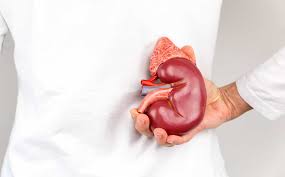Article
Good News for Adult Survivors of Childhood Cancers
Research presented at ASCO shows late effects of childhood cancer treatment lessening.
Research presented at American Society of Clinical Oncology (ASCO) meeting this month from St. Jude Children’s Research Hospital indicates that changes in treatment has reduced deaths from the late effects of cancer treatment and extended the lives of childhood cancer survivors.
The study was presented at the plenary session press briefing, which highlights research that ASCO deems as having the highest scientific merit and greatest potential to affect patient care.
The study followed 34,033 children who were treated between 1970 and 1999 and who were age 20 and younger at diagnosis. All lived at least five years after their cancer was discovered and were considered long-term survivors. The analysis showed that the 15-year death rate has decreased steadily since 1970 due in part to a reduction in deaths from the late effects of cancer treatment.
Some of the most significant numbers were for children diagnosed with acute lymphoblastic leukemia (ALL); Hodgkin lymphoma; and Wilms tumor, a cancer of the kidneys as their primary cancer. Together, the cancers account for about 30 percent of the estimated 15,780 cases of pediatric cancers diagnosed annually in the U.S. Five-year survival for pediatric patients with these cancers is now 90 percent or better, according to the American Cancer Society.
The treatment changes for these patients included reduction in use and dose of radiation and anthracyclines. Between the 1970s and the 1990s, the percentage of ALL survivors in this study treated with brain irradiation decreased from 86 percent to 22 percent. In 2009, St. Jude published evidence that pediatric ALL is curable without brain irradiation and no longer uses radiation for treatment of ALL, which has been shown to be particularly detrimental. Today, 94 percent of new St. Jude ALL patients are alive five years later.
The percentage of Hodgkin lymphoma and Wilms tumor patients treated with radiation fell from 96 to 77 percent and 77 to 49 percent, respectively. During the same period, the average cumulative anthracycline dose also declined for study participants with those cancers. The prior treatment left survivors at increased risk for developing second cancers, heart failure and other serious health problems that follow adult survivors of childhood cancer.
Indeed, one of the first major studies on late effects of treatment came from Kevin Oeffinger, who, at the time of the study in 2006, was the director of Memorial Sloan Kettering’s Program for Adult Survivors of Pediatric Cancer. Oeffinger found that 73.4 percent of pediatric cancer survivors would develop a chronic health problem within three decades of diagnosis and 42.4 percent would have a severe life-threatening, disabling or fatal condition such as heart attacks or second cancers.
Oeffinger’s study stressed increased awareness about late effects and the need for adequate follow-up of significant late effects. He used, as an example, findings that showed young women at increased risk of breast cancer because of radiation to the chest area were not following screening recommendations that indicated they start mammograms every year beginning at age 25 or eight years after radiation whichever comes last. But the study found that among women aged 25 to 36 only 36.5 percent had a screening mammogram in the previous year.
The St. Jude study showed that such findings have impacted treatment decisions and helped treating physicians better understand and recognize late effects, according to the study’s principal investigator, Greg Armstrong, MD, an associate member of the Department of Epidemiology and Cancer Control.
Between 1970-74 and 1990-94, the 15-year death rate for survivors in the St. Jude study fell from 12.4 percent to 6 percent. During the same period, deaths from the late effects of treatment declined from 3.5 percent to 2.1 percent due to declining death rates from second cancers, lung or heart problems.
Armstrong said treatment-related side effects continue to take a toll, particularly on survivors of childhood cancers where five-year survival rates have lagged and treatment intensity has increased.
"For certain childhood cancers like high-risk neuroblastoma and bone tumors, we have not backed off of therapy, because cure rates remain unacceptably low," he says.




